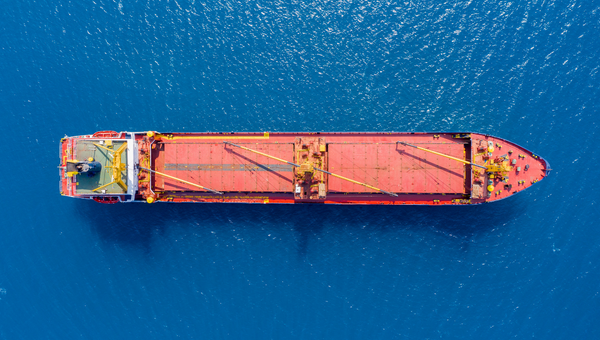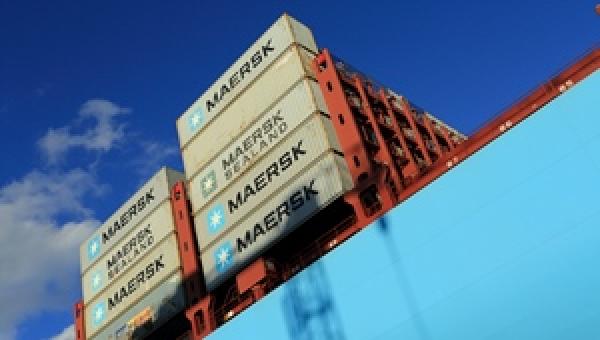Economic Loss and Package Limitation
One of the important carriers’ defences to cargo claims under the Hague and Hague Visby Rules is the, so-called, “package limitation” defence. This is the right of shipowners to limit liability by referring to the number of packages or units shipped by number or, alternatively, by reference to the weight of the cargo.
Article IV rule 5(a) of the Hague-Visby Rules (HVR) (the “Rules”) limits carriers' liability for loss or damage to goods carried as follows: “Unless the nature and value of such goods have been declared by the shipper before shipment and inserted in the bill of lading, neither the carrier nor the ship shall in any event be or become liable for any loss or damage to or in connection with the goods in an amount exceeding 666.67 units of account per package or unit or 2 units of account per kilogramme of gross weight of the goods lost or damaged, whichever is the higher.”
The precise meaning of the words “goods lost or damaged” in Article IV rule 5(a) was initially clarified by the English High Court decision in The Limnos, Serena Navigation v Dera Commercial Establishment [2008] 2 Lloyd's Rep 166 (“The Limnos”), in which the Judge decided limitation was to be based on the weight of the physically damaged cargo only.
Although a decision from early 2023, The Thorco Lineage is worth highlighting given the frequency of cargo claims with some element of alleged economic loss. The judge deciding The Thorco Lineage was not bound by The Limnos, and rejected the argument that the phrase “goods lost or damaged” in Article IV rule 5(a) of the Hague Visby Rules limited claims for economic loss by reference only to the weight of cargo physically damaged. Instead, The Thorco Lineage is authority that package limitation is to be calculated by reference to the weight of cargo physically or economically damaged.
Previous case law
In The Limnos it was decided that the carrier benefits from the application of Article IV Rule 5 (a) which limits liability to the weight of cargo that has been physically damaged. Following that reasoning, if there was no loss or damage physically suffered by the cargo, then a claim for economic loss would be unlimited. In stark contrast however, if there was physical damage to a small part of the cargo, that same claim would be limited to a modest sum.
Sir Nigel Teare in the decision of The Thorco Lineage declined to follow the decision in The Limnos and decided that the limitation of the carrier’s liability under Article IV rule 5 (a) is to be measured by reference to the weight of the cargo physically or economically damaged.
Factual background
The Thorco Lineage (the “Vessel”) was loaded with a cargo of 10,287.07 WMT of zinc calcine for a voyage from the United States to Australia . During the voyage, the Vessel’s main engine failed and the vessel grounded at an atoll in French Polynesia. The Master signed a “No Cure No Pay” Lloyd's Standard Form of Salvage Agreement (“LOF”) and the Vessel was subsequently re-floated and taken for temporary repairs in French Polynesia, and thereafter for permanent repairs in South Korea. The Claimant cargo interests provided an Average Bond and upon arrival of the Vessel at South Korea, some cargo was discharged and stored ashore. The LOF was, then, terminated and the Claimant provided salvage security in the sum of US$8 million. Some of the cargo was shipped on board another vessel for carriage to the intended port of discharge where it was delivered. In the result, 9,523 WMT of cargo were not lost or physically damaged and 764.07 WMT were lost or physically damaged.
The Claimant contended that the grounding was due to the failure of the vessel’s main engine, and as a result, the carrier had not exercised due diligence properly to ensure that the vessel was seaworthy. The Claimant claimed US$7.355 million against the carrier, reflecting their contribution to the salvage costs, circa US$278,700 in respect of physical damage to the cargo, circa US$723,900 relating to additional on-shipment costs and circa US$59,000 incurred in arranging for the salvage sale and/or disposal of some of the physical damaged cargo.
The carrier argued that its liability should be limited in accordance with Article IV Rule 5(a) of the Hague-Visby Rules, and following the decision in The Limnos calculated by reference to the weight of the cargo that was physically damaged. Not surprisingly, since this would have resulted in a package limitation of less that 25% of the total sum claimed, the Claimants disagreed.
Accordingly the question for the court was:
“Whether on the agreed and assumed facts, the Defendant is entitled to limit its liability, and if so, in what amount in respect of each head of loss?”
The Claimants position was that the carrier’s liability in respect of the salvage and on-shipment costs should be limited:
- either by referring to the weight of the salved cargo because the words "goods lost or damaged" at the end of Article IV r.5(a) refer to goods lost or damaged, physically or economically (our emphasis). The whole cargo suffered economic damage by reason of the Claimant's liability to pay salvage and on-shipment costs. If so limitation exceeded the value of the claim; and/or
- alternatively, the maritime lien on the cargo for salvage damaged the Claimant's proprietary or possessory title in the cargo so that the cargo was damaged. The limit calculated on that basis would, again, exceed the value of the claim; and/or
- If the court does not accept the above points (i) and (ii), then, pursuant to the The Limnos, the carrier’s liability to pay salvage and the on-shipment costs is not subject to any limit pursuant to Article IV(5)(a) of the Rules.
The Decision
The judge (Sir Nigel Teare) acknowledged that broad principles of interpretation should be employed when attempting to analyse international conventions such as the Hague Visby Rules. Consideration should also be given to the intention of the drafters of the Convention as found in the “travaux préparatoires”. A similar analysis was also undertaken in Vinnlustodin Hf and Another v Sea Tank Shipping AS (The Aqasia) by the English Court of Appeal - see www.steamshipmutual.com/publications/articles/theaqasia062018
In this respect, the drafters' intention in the “travaux préparatoires” was to limit “economic losses which arise in connection with the goods but without physical damage”. As a result, the phrase “goods lost or damaged” as demonstrated in Article IV rule 5 (a) could not be construed to require physical damage to trigger limitation. Therefore, the judge held that the phrase “goods lost or damaged” should be interpretred as “goods lost or damaged physically or economically”.
Furthermore, and even if The Limnos was correct, in accordance with The Breydon Merchant [1992] 1 Lloyd’s Rep. 373 and the Australian case, The Ikan Jahan [2019] 2 Lloyd's Rep 235, the whole of the cargo was physically damaged, as the salvor’s lien on the cargo had, in effect, damaged the title to the cargo.
Comments
Whilst at first glance the decision is favourable to cargo claimants The Thorco Lineage is also beneficial to vessel owners / carriers when faced with claims for economic loss, for example, and assuming a breach of the contract of carriage, diminution of the cargo’s market value or the exercise of liens on the cargo by salvors since prior to The Thorco Lineage there was no right to limit absent physical loss or damage to the cargo. Nonetheless, the limit will now be measured with regard to the weight of the entire cargo to which the damage relates.
So far as there are now two conflicting English decisions of equal authority, the consensus amongst practitioners and commentators appears to be the Thorco Lineage is to be preferred.




